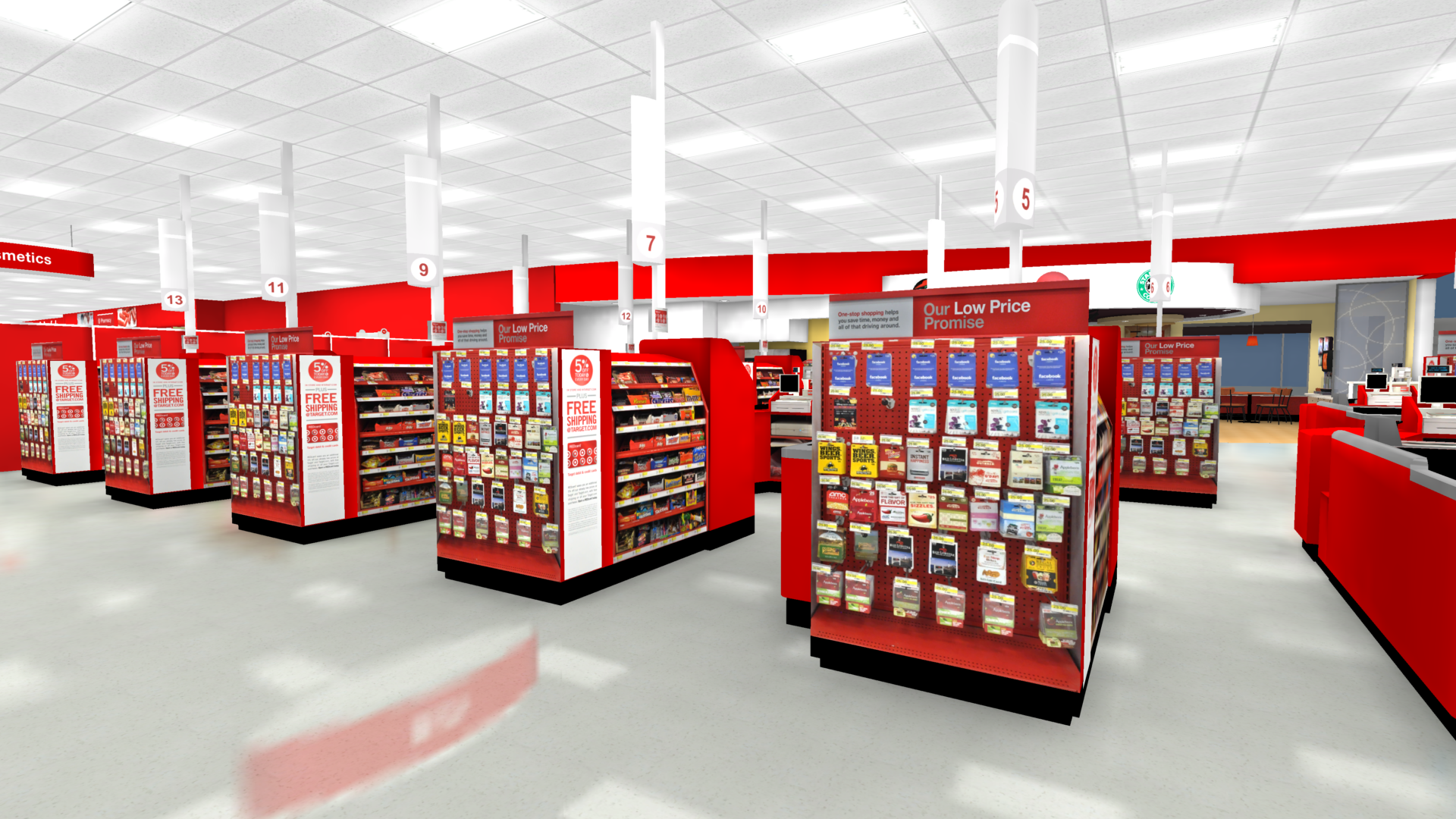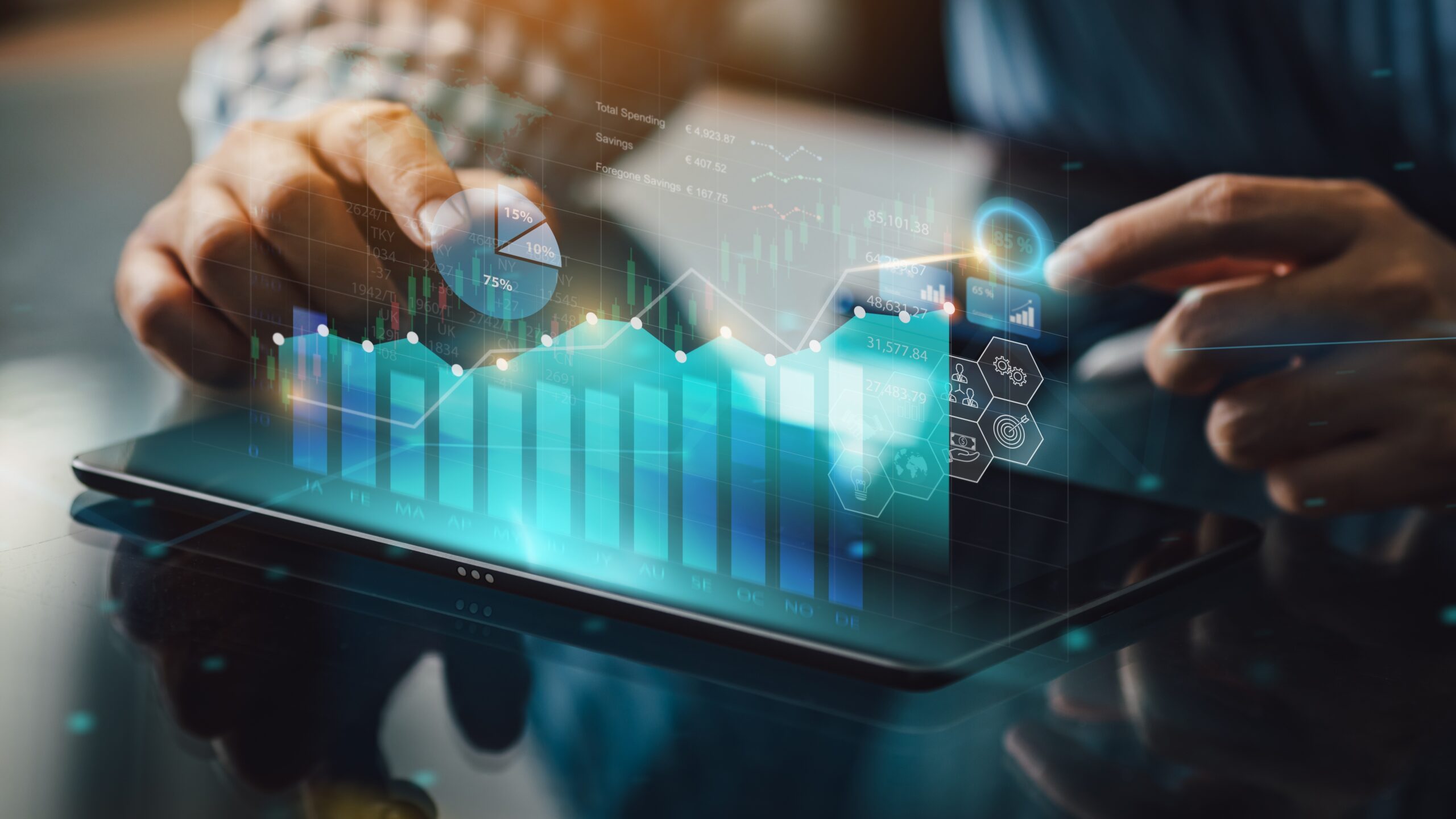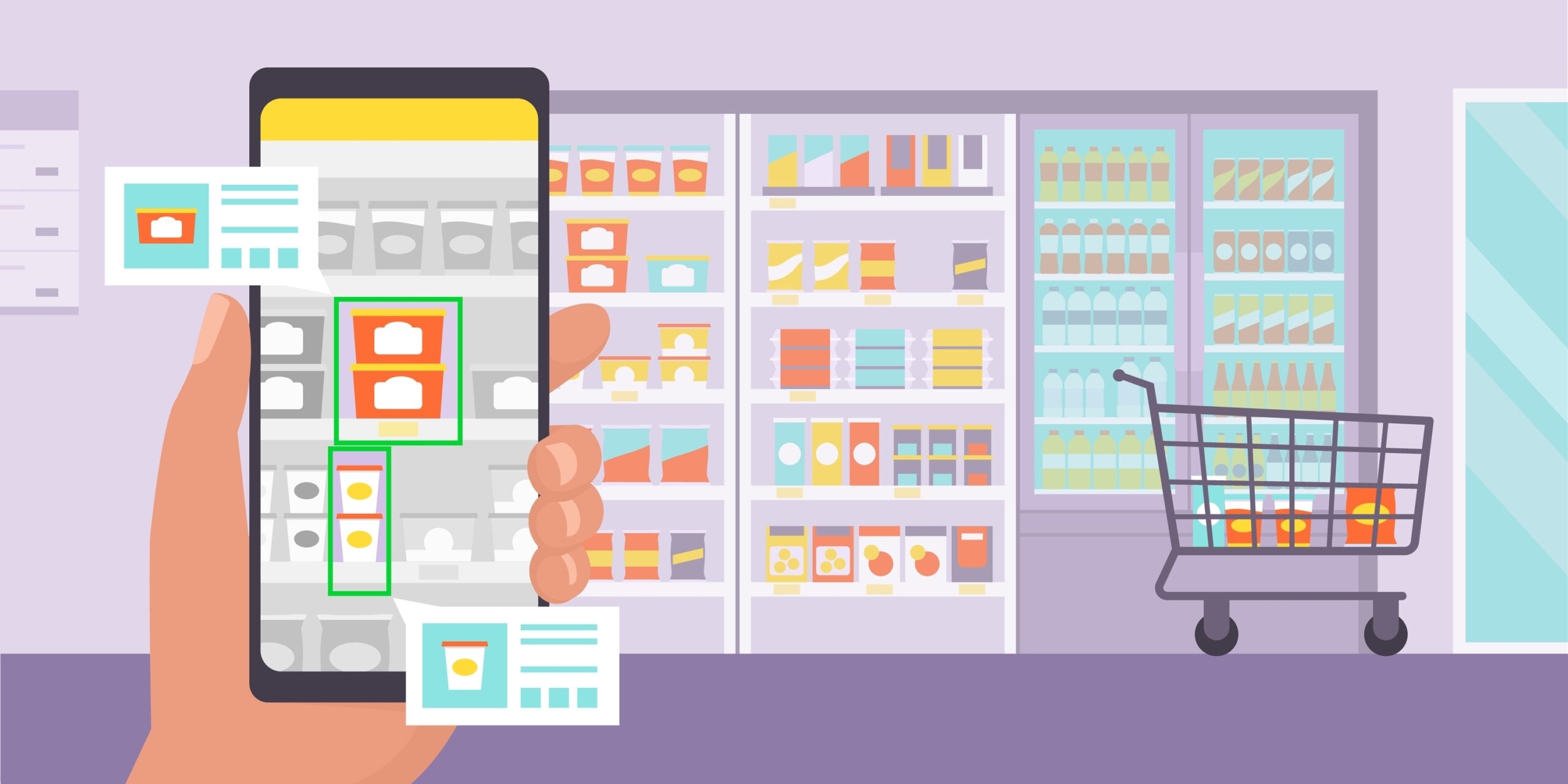Selling items in your store is about more than just what’s on the shelves. In fact, the placement and display of your products can hugely impact sales—especially when it comes to impulse items at checkout. There’s an entire field dedicated to the psychology of consumer behavior, and it’s clear that impulse purchases are a big driver for sales. A Shopify study found that 50% of all groceries purchased are impulse buys. That’s a significant chunk of revenue that can’t be ignored. We also know this phenomenon is on the rise, with an 18% increase in impulse purchasing at the start of the global COVID-19 pandemic.
But what exactly is an impulse purchase? And how do you ensure your strategy for displaying products at checkout maximizes those sales? This blog lays out all of that and more.
Impulse buying at the checkout area
Let’s start by defining an impulse purchase. Essentially, it’s an in-the-moment decision to make an unplanned purchase. The consumer may have a need or want for the item, but they haven’t thought about buying it before encountering it in the store, or online in the case of eCommerce. The online equivalent to this would be impulsively purchasing one of the suggested add-on items on the Amazon checkout page.
Impulse buying can be particularly common at the checkout line, where consumers are often waiting with nothing else to do. At the same time, the pressure of the limited time until it’s your turn at the cash register can lead to rash decision-making. It can lead to impulse purchases of small items like candy or magazines. According to research, roughly 87% of US shoppers have made an impulse purchase at the checkout counter.
There are many factors thought to contribute to impulse buying. In our recent blog, 9 Driving Forces Behind Impulse Purchase Decisions, we go into detail about the thought processes behind these decisions. Here is a brief breakdown of some of the most significant driving factors:
Emotions: Impulse purchases can often be driven by emotions, such as feeling happy or stressed. In fact, there was an uptick in shoppers purchasing things to make themselves feel better during the pandemic. In fact, they claimed it turned a bad day into a good one for them.
Personality traits: Some individuals may be more susceptible to impulse buying based on their personality traits. These can include things like a desire for new experiences, impulsiveness, and sensation-seeking behavior. Self-control, or lack thereof, can also play a role in impulse buying. Finally, instant gratification, or wanting something immediately instead of waiting, can drive impulse purchasing.
Buying beliefs and attitudes: Not everyone views shopping in the same way. Some may see it as a recreational activity, while others consider it a necessary task. Some place great emphasis on planning purchases, while others may have a more “freestyle” approach.
Generally speaking, shoppers with clear shopping goals (i.e., a list) are less likely to make impulse purchases. Furthermore, people love a good deal. If they spot something on sale at checkout, they may be more likely to make a spontaneous purchase.
Display strategy: How products are displayed in the store can also play a role in impulse buying. If items are visually appealing and organized in an attractive way, shoppers may be drawn to them and feel compelled to buy them on the spot.
Past experiences: Our past experiences with shopping, both good and bad, can also influence our behavior. If we’ve had a positive experience with impulse purchases in the past (i.e., buying something on a whim that turned out to be useful or enjoyable), we may be more likely to make them again in the future. Our brain is wired for positive reinforcement, and we may seek out that feeling again.
Why is checkout a prime opportunity for impulse sales?
The above factors mainly pertain to the individual consumer, but there are also situational factors unique to checkout that can contribute to impulse purchases. First of all, as mentioned above, consumers often have nothing else to do while waiting in line. They may be more likely to browse and consider purchasing items they hadn’t planned on buying.
Additionally, the checkout line itself presents a prime opportunity for impulse purchases through the use of strategically placed displays. These displays can showcase items that may not have been on the consumer’s radar but are now easily accessible and conveniently located right in front of them. Novelty can also play a role in impulse buying. Displays can showcase new or seasonal items.
Also consider situational factors that can impact purchasing behavior, such as external stimuli. Displays at the checkout line can serve as stimuli, drawing the consumer’s attention to certain products. The background music is usually clearer and louder at the checkout, potentially impacting consumer emotions and behavior. Finally, employees are nearby to answer questions and assist in purchasing, making the process easier for the consumer.
Self-checkout impulse buying
A newer yet rapidly growing trend in stores is self-checkout lanes. Especially at large supermarkets like Walmart and Target, many shoppers may prefer convenience and control over their purchases, while others may miss the human interaction and potential for impulse purchases. Regardless, self-checkout lanes present their own unique opportunities for impulse buying.
First of all, these lanes often have display racks or screens with suggested or complementary items to add to the shopper’s purchase. The lack of human interaction may make it easier for consumers to impulsively add these items to their cart without feeling any social pressure or guilt.
Additionally, self-checkout lanes often have a section for last-minute items, such as candy or gum. These items are usually placed at eye level and easily accessible, making them tempting for impulse purchases.
Overall, while they may not be as widely used as traditional checkout lanes yet, it’s important to consider the impact of self-checkout lanes on impulse purchasing behaviors. As they become more commonplace, retailers should strategize ways to capitalize on these unique opportunities for impulse sales.
There is still less impulse buying at self-checkout as compared to staffed checkout, but that doesn’t mean there aren’t ways to increase those sales. The current set-up and placement of impulse items may not be enough. Retailers should continue to experiment with different display strategies and analyze the impact on sales.
What does the data say about impulse buying at checkout?
In order to fully leverage the potential for impulse purchases at the checkout line, it’s important to consider data and research on the topic. One essential factor we didn’t mention yet is demographics.
For example, women are more likely to be impulse buyers than men, both at a staffed checkout lane (24% more often than men) and a self-checkout lane (6% more often than men). This might have to do with societal expectations and gender roles, as well as different purchasing habits and preferences. On average, women’s shopping carts are bigger, so they may not visit the self-checkout as often.
As for age, studies show that consumers under the age of 35 are more likely to make impulse purchases, with those under 25 being the most impulsive. According to IHL Consulting President Greg Buzek, this could be because younger shoppers are more susceptible to marketing. Regarding snacks, they also have fewer woes about healthy eating and more willingness to indulge. A smaller percentage are battling obesity and may not feel as guilty about indulging in impulse buys.
Speaking of snacks, 36% of the study’s respondents cited M&Ms as their favorite impulse purchase at checkout, followed by candy bars and gum. In terms of drinks, bottled water was the most popular by a long shot, with 41% of respondents saying it was their favorite impulse buy.
Overall, understanding the demographics and preferences of your customers can help inform your checkout display strategy and potential for impulse purchases. Pay attention to data and continuously experiment with different approaches, as what works for one demographic may not necessarily work for another.
The key is identifying triggers and adapting to meet the needs and desires of your particular customer base. In the next section, we’ll discuss a new strategy for doing just that.
VR Testing for Checkout Strategy
If you want to dominate the sale of impulse items at checkout, you need to understand what draws customers to make those purchases. So, how can you optimize your checkout strategy? One innovative approach is to utilize virtual reality (VR) technology for testing.
By using VR, retailers can simulate different checkout scenarios and gather data on consumer behavior. This allows them to experiment with various displays and placements without physical changes, cost, and time commitment. Additionally, they can track and analyze which factors have the biggest impact on impulse purchasing behavior.
In such a controlled and data-driven environment, retailers can make informed decisions on how to optimize their checkout strategy and boost sales of impulse items. Here’s what you can try in VR:
Product pricing
Impulse items at checkout lanes work best when they are priced just right—not too high to deter a purchase, but not too cheap as to devalue the product. VR testing allows retailers to experiment with different price points and analyze consumer behavior. The general consensus seems to be that $20 or less is the sweet spot for impulse buys at checkout.
Keep in mind that your customers may already have a full cart, so they may not be as willing to splurge on a higher-priced item. Consider testing out lower price points for these impulse buys.
Offering a bundled deal on impulse items can also encourage purchases. It can be particularly effective for snacks, drinks, and other consumable products that have a higher likelihood of impulsive buying.
Product placement
The placement of your impulse items can make all the difference in terms of sales. VR testing allows you to try out different placements, from eye level and easy to grab to tucked away in a corner. Consider the flow of the checkout lane and how your customers will be approaching the impulse item section.
You may also want to experiment with grouping certain items together or separating them out. For example, placing all candy bars in one section versus spreading them out among other impulse buys.
Visual appeal
The visual appeal of your impulse items can also significantly impact sales. VR testing allows you to try out different displays, packaging, and signage for these products. Think about how your impulse items will stand out among the rest of the products at checkout. Bright colors and attention-grabbing signage may draw customer attention and increase impulse purchases. Don’t forget about seasonal and holiday displays, too. These can be easily tested in VR to see how they impact impulse buying behavior.
How does VR testing work?
VR testing utilizes 3D simulation software to create a digital twin of a real store where retailers can test and gather data on consumer behavior. Retailers can track and analyze product selection, purchase patterns, and responses to different displays and placements. You are creating a perfect copy or digital twin of your grocery store, allowing endless experimentation and optimization.
A group of test participants, or “shoppers,” are placed in the simulated environment and given a specific set of tasks or prompts. Once inside your virtual store, they can browse and purchase items just as they would in a real-life scenario. For example, they may be asked to purchase items for a virtual dinner party. They may also have a budget for impulse purchases.
Retail stores gather data in two ways. The first is through tracking the shoppers’ physical movements and interactions within the VR environment. The second is through surveys and questionnaires to gather more subjective data on their thoughts and feelings about the simulated store experience. At the end of the testing period, retailers can analyze the data and make changes to their physical stores based on the results.
Get Started Today with InContext Solutions
Ready to see how VR testing can boost sales of your impulse items at checkout? Contact InContext for more information on our virtual reality platforms and services. Our team of experts will work with you to create the perfect simulated shopping experience and gather valuable data on consumer behavior.
With our all-inclusive VR testing solutions, you’ll be able to optimize your checkout lanes and boost impulse purchase rates. We take care of the virtual store set-up, recruitment of test participants, and data analysis. Take the first step towards a more successful retail strategy with InContext Solutions.





